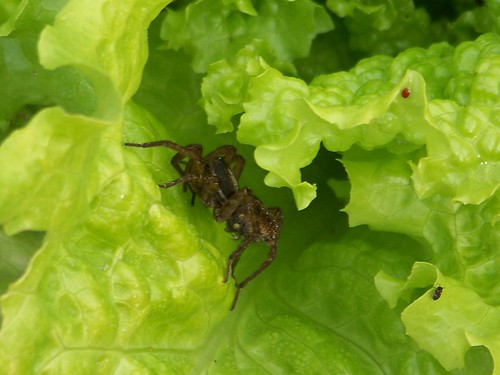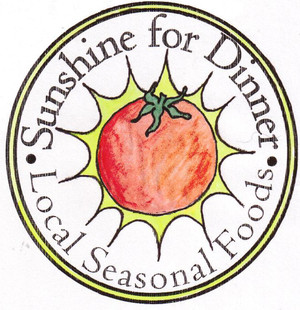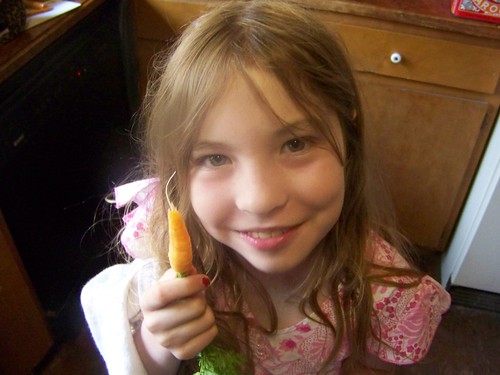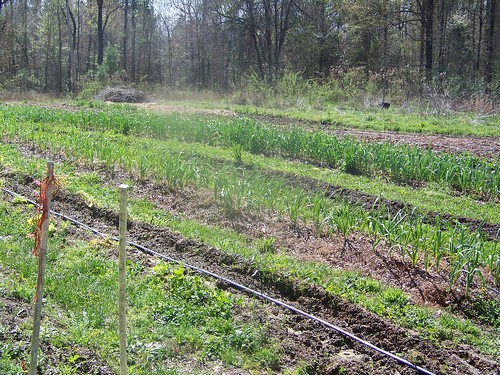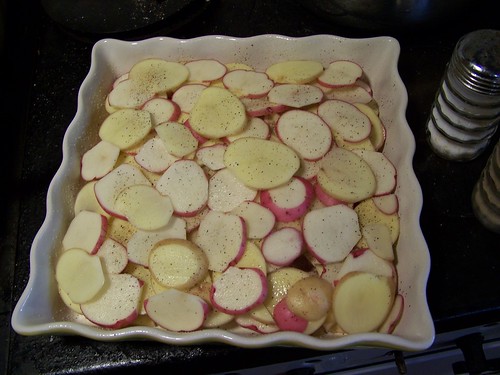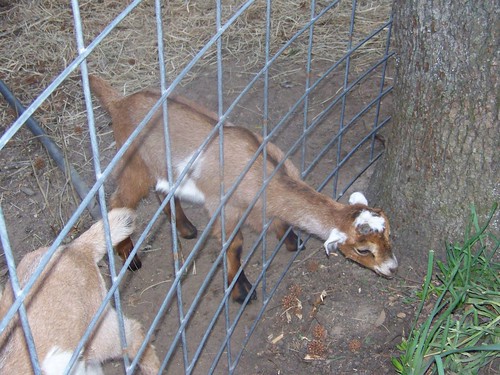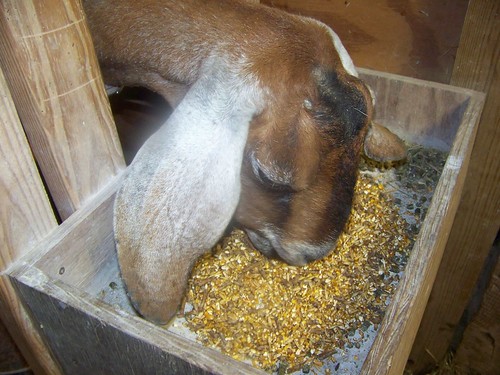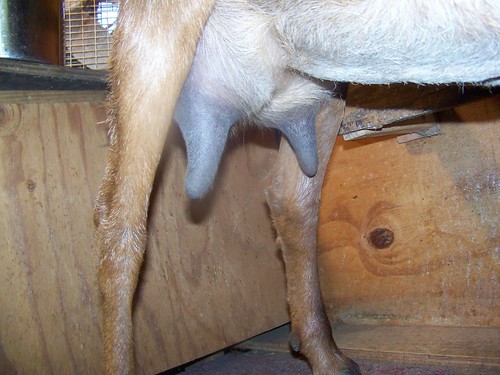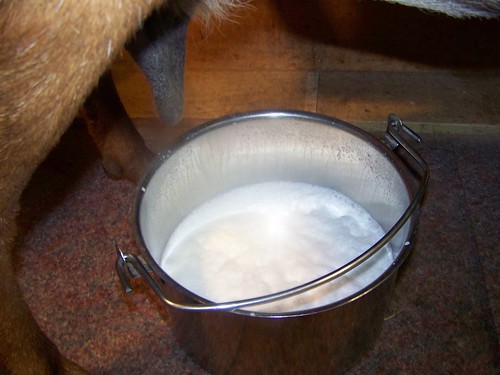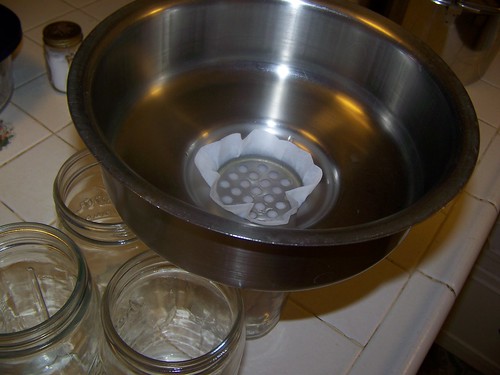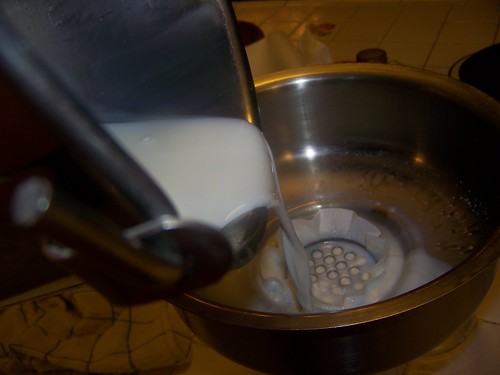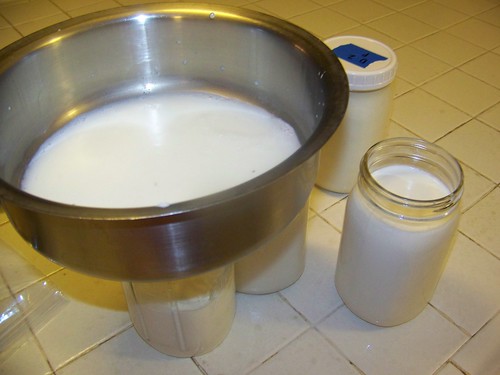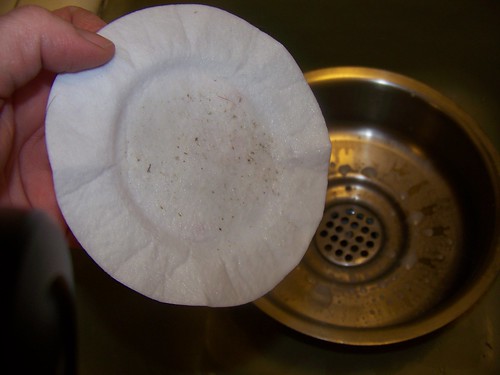23 Jun Tue 2009
On the menu this week . . . June 22, 2009
On the menu this week . . . June 22, 2009
Tomatoes – the very first!
Cherry Tomatoes – yes, they are orange
Lettuce ‘Oak Leaf’ - the very last . . .
Summer Squash
Peaches ‘Harken’
Sweet Corn ‘G-90’
Green Beans ‘Kentucky Wonder’
Cucumber
Garlic
Farm fresh eggs
What to do with Green Beans . . .
Green beans are suited to a variety of preparations, from elegant to country style.
Begin by giving them a good rinse in cool running water. Snap off each end from the bean – and if a “string” happens to be attached, just pull down the bean until it comes off. I haven’t encounter many strings with this Kentucky Wonder pole bean – but some green beans are very stringy and called “string beans”. Leave them long for an elegant presentation or snap into pieces about 1 1/2 inches long if you prefer. Now they are ready to cook.
There are two approaches to cooking the beans. One is to keep them crisp and bright green, the other is to cook until very tender.
I like both ways, but the way I most often prepare green beans is a very Southern, country style. Fry a few pieces of good bacon in a large cast iron skillet. When crispy, add the snapped green beans to the pan with a little water, maybe a cup. And let cook, covered, over medium high heat, stirring occasionally. As the water cooks off, the beans will start to brown a little. This is the effect I am looking for – the beans have a lot of natural sugar and they will caramelize a bit and have a rich flavor, and it looks beautiful. Keep adding a little water if the pan is getting too hot, and keep stirring. Add salt. When the tenderness is to your liking, turn it off and serve hot. The leftovers are even good cold with a little vinaigrette, like a green bean salad.
Other popular variations are to cook the snapped beans in a pot with new potatoes until all are tender. Serve with salt and pepper and butter. Also, cooking in plenty of salted water and serving the tender beans with fresh cornbread is an old fashioned hearty meal.
To achieve the crisp bright beans, it is necessary to either steam or simmer the beans briefly – maybe 10 minutes or so. If you are serving hot, do so promptly or the color will fade. To serve cold, like on a vegetable tray for dipping, you must stop the cooking by “shocking” the beans, plunging them into icy cold water. They should stay green and crispy.
On the menu this week . . . June 15, 2009
Blackberries
Summer Squash – yellow crookneck and straightneck, gray and green zucchini, yellow zucchini ‘Gold Rush’
Carrots
Lettuce ‘Buttercrunch‘ and ‘Jericho‘– washed whole leaves
Sweet corn
Sweet Onions
Garlic
Farm fresh eggs
12 Jun Fri 2009
Carrots
Carrots
Our son, Max (not pictured . . .), is five years old, and at the age when kids say a lot of funny things. He has cracked me up a couple of times lately with his comments about carrots.
When we first started pulling a few carrots to eat at the baby stage, he enjoyed them, but one day he asked me, “Mom, can’t we have some carrots that don’t have these plants growing out of the top?”
Evidently the leafy tops didn’t deter him, because one day he came in the house with damp dirt all around his mouth. I asked him if he had been eating dirt. He replied, “No, I’ve been eating dirty carrots!”
01 Jun Mon 2009
On the menu this week . . . June 1, 2009
Sweet Onions
Baby Summer Squash – yellow crookneck and straightneck, gray and green zucchini, yellow zucchini ‘Gold Rush’
Carrots
Lettuce – mixed, washed whole leaves – red leaf, buttercrunch, oak leaf, and romaine
Radishes
Spring garlic
Farm fresh eggs
Blackberries and peaches??????
Normally by this time we would be full on into blackberry season. My daughter’s birthday is this week and I know that for eight birthdays there have been blackberries and here is the ninth birthday, and no blackberries. These early berries were damaged at the flower stage in a frost. There will be berries soon when the later varieties come on.
The report at the farmer’s market is that there is a half peach crop this year – they aren’t in season yet, of course. Half is better than none! In 2007 there was a total loss, in 2008, a great crop, this year, 2009, half. The life of a peach farmer is one of uncertainty.
Onions
The onions in Fouke took a beating in the hail storm a few weeks ago. These onions are delicious, but some have a soft core as a result of damage to the stem. Keep them refrigerated and discard any soft parts. If we were in pioneer days and growing onions to keep for our families through the year, we would be going without this year. These soft cored onions will not keep. I can imagine folks including onions in every meal to get them all eaten up before they went bad, then going months with no onions – an important seasoning ingredient for the bland pioneer diet. No California or Georgia onions for them.
18 May Mon 2009
On the menu this week . . . May 18, 2009
Spring onions
New potatoes – ‘Yukon Gold,’ and Red La Sota’
Kale
Edible pod peas – sugarsnap and snow peas
Cabbage
Spring garlic
Beets
Farm fresh eggs
Our first vegetable delivery of the 2009 season!
I might be getting started too early, because the bag feels a little skimpy, but I will throw in something extra as soon as I can to make up for it. I wanted to go ahead and get started because I have been getting a lot of calls and questions about when I’ll be showing up with veggies. But this is about 2 weeks earlier than we started last year.
Weather woes
Rain, rain, and more rain. Oh, and let’s not forget hail. And a 3 day power outage. And a little sunshine would be appreciated by my growing plants. Although the rain event we have been experiencing these last few weeks is over, the effects will linger. There is still standing water in my garden. The bugs are tremendous in variety and quantity. Most plants are growing through their tattered leaves and broken stems sustained in the hail at the beginning of the rain onslaught. The tomatoes and squash, for instance are pulling through and looking good. Others either just didn’t make it at all, like the eggplant, which was totally crushed and destroyed, and the onions, which are alive but look terrible and won’t get any better.
Spring garlic
This is like the soft-shelled crab of the garlic world. Peel off the outer layer and inside is the developing head of garlic. The cloves are so tender that you can just chop up the whole thing and use it – no peeling.
This is a bit unorthodox, but we should enjoy this garlic while we can. I am hoping that it continues to develop, but the soil is very wet and the appearance of the plants is unfortunately declining. This is so disappointing, because we tripled our garlic production for this year based on positive feedback from last year’s crop. We planted in the fall last year, it has been growing all winter and looking beautiful, and now the leaves are yellowing and they should still be growing vigorously. Too wet!
Looking forward to a great season!
14 Mar Sat 2009
Goats for sale
Dairy Goats:
These babies are about 5 weeks old and are being bottle fed with fresh goat milk, supplemented with goat milk replacer as needed. They are totally tame and very friendly. They are brother and sister, out of a pure LaMancha doe and a pure Nubian buck. Both parents are good milking stock.
Doe: $100.00
We call her Sandy. She has the nubby ears that result from some LaMancha/Nubian crosses - some LaManchas have no ears at all! She has been dehorned.
Buck: $50.00
He is a handsome fellow. The kids didn't use much imagination when they named him "Billy", but feel free to choose your own name. Although he and Sandy are two of three born to the same mama, Billy has the long Nubian ears, inherited from his father. He has been dehorned.
Nigerian Dwarf Goats:
I am eliminating my small herd of Nigerian Dwarf goats. They are good little hardy goats, great for pets and eating brush. I have a beautiful buck, very docile, for $75.00, and several does for $50.00 each. Some are very small. These goats are not bottle fed, affectionate goats, but they have been handled alot and are not totally wild. We interact with them on a daily basis. If you are looking for goats to eat brush, these are an excellent choice.
05 Mar Thu 2009
Milk - a journey from udder to fridge
I am not a full-time milkmaid, but I have the responsibility for three milkings a week for a small herd of three dairy goats. One evening I captured the experience to share with the curious.
Here is Daisy, goat extraordinaire. She looks rather unremarkable, but she milks like a cow (well, not quite, but almost)! Her teats are huge and so easy to milk and she is giving slightly over a gallon a day of delicious milk. She has one mission in life - convert sunshine to milk. She eats leaves all day, and comes to stand by the barn door ready to milk. Then she goes back out to the field and commences eating more leaves. Good girl!
This is the business end.
And this is my and Daisy's business concluded for the evening. She is officially off duty, and I take it from here.
Back in the kitchen, the milk is strained into clean (sanitized in the dishwasher) glass quart jars. The strainer is stainless steel, and the filters are disposable Schwartz brand milk filters.
The milk is carefully poured into the jars.
It can take a few seconds for the milk to go through the filter. You can see here some filled jars and one with the plastic lids that we use. A blue sticker on the lid has a cryptic code, D 2 P, which means Daisy, March 2, evening milking (p as in pm). Then into the fridge with all the milk.
The used strainer is examined for anything suspicious - what you see is probably bits of hay and a few hairs that have been filtered out. This is normal detritus. What you don't want to see is clots of milk/ blood/ mucus that might indicate mastitus, an infection in the udder, but if you see it here you can begin observation/treatment quickly.
Then the washing up - hot soapy water does the trick. Everything is ready for morning, when we go again.
31 Jan Sat 2009
Milk! Maybe . . .

In Arkansas, there is legislation being considered to make it legal for people to sell modest amounts of raw cow milk as on-farm sales. This would be so wonderful for our state - if you are interested in supporting this, now is the time to let your state senator know. The bill has passed the house overwhelmingly, but as far as I can tell is still in the committee in the Senate. Below is the letter I wrote in support of the bill, HB1114. I'll keep you posted.
I am writing in support of H.B. 1114 - to allow the incidental sale of whole milk that has not been pasteurized. As a consumer, I would love to be able to purchase raw, whole, cow milk. As the owner of a farm and business selling locally grown produce, I know that others want this product as well.
While other rural states are reaping the benefits of the local food movement, in southwest Arkansas our grocery money continues to flow elsewhere instead of into the pockets of our local farmers and then back into the community economies that are so critically important to our state.I offer a subscription-type delivery service of locally grown, high quality produce in the Texarkana area, and the demand for my product is far above the supply I can produce at this time.
The local food industry must have both buyers and sellers to succeed. Right now I have lots of buyers on a waiting list, but not enough sellers - growers of local produce - to supply them.While of course I don’t sell milk to my subscribers, any measure that strengthens and diversifies small farms in Arkansas is good for my business and good for the food consumers of Arkansas.
In my investigations of local food distribution in other states, I have noticed that states with laws that are friendly to raw milk access have vibrant and successful small farming and local food communities, where the dollars of local consumers cycle in their local and state economies, creating state and local revenues. Providing raw milk access seems to be an indicator for the growth and success of the local food industry.
We must remove archaic and meaningless regulations that prevent Arkansas landowners from developing profitable and sustainable farming operations. Encouraging young farm families who are committed to a healthy rural Arkansas lifestyle is good for my business. H.B. 1114 helps the family dairy cow become an asset, not a liability, and therefore makes the whole farm stronger.I want to buy plentiful, high quality, beautiful, local produce to provide for my customers. I need young farmers to buy from - while I depend now on the network of farmer's markets in my area, they are overwhelmingly staffed by older folks for whom farming is a hobby. Farming must become profitable for young families if Arkansas is to take advantage of the powerful local food movement that is so good for local economies. Offering small farmers the ability to sell a few gallons a month of excess milk makes the expensive prospect of owning and maintaining a dairy cow more manageable.
While the average consumer of high quality, high end gourmet local food does not consume raw milk, many small farm holders form a stronger commitment to this lifestyle if they can successfully integrate a cow into their operation. They are likely to be farming year round, and more involved in the operation as a family. Their children can have the benefit of dairy calves to show at fairs and for FFA projects and their family can benefit from dairy products such as home-made cheese, butter, and yogurt.
In MillerCounty, where I live and work, there are empty fields along any road you choose to travel. Some are filling with overpriced, cookie-cutter, shoddily built, suburban housing that represents only the massive debt and lack of foresight that has driven our entire country into economic crisis. These fields could be developed into thriving farms, growing food to be sold nearby, keeping Arkansas money in the local communities, providing healthy nutrition for our citizens, and allowing farm families to have a lifestyle that is one of integrity and pride. These fields can produce wealth for Arkansas families. And yes, the sight of a grazing dairy cow and her calf would be inspiring and affirming to those of us who love our state and know that the rural life that has always existed here is a good one.
Please support your local farmer, because the local farmer does so much more for our state than just till the soil. Please vote yes for H.B. 1114.
Thank you,
Georgiaberry Mobley
Kandan Mobleywww.SunshineForDinner.com
230 PR 1102
Fouke AR 71837
03 Jan Sat 2009
Organic pest control or free labor? You decide.
